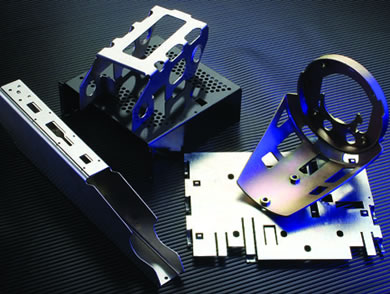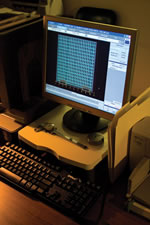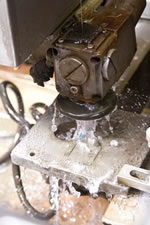Progressive, or long-run, stamping is often the first metal stamping process that comes to mind for engineers, designers and buyers, but it’s not the only – or even the best – solution for every metal forming application.
Using coils of material fed into a punch-press, progressive stamping produces a completed part (along with a strip of scrap) after a series of hits through a single press.
This can be an excellent, low piece-price method of manufacturing metal components, but the required volumes must justify the cost of tooling. Tooling costs are typically in the tens of thousands of dollars, making the initial tooling investment a major decision.
Short-Run Stamping, on the other hand, uses a combination of “stock” tools, custom-made tooling components and die inserts to manufacture parts through multiple one-hit stations.
First in short-run stamping, a blank, the overall flat part, is created. Then, any interior holes or slots are added in a second operation. Any bends or three-dimensional features are added in a forming operation or multiple forming operations. Any drilling or tapping operations are added next in yet another work center. Finally, the parts can be plated, painted or coated according to the customer’s specifications.
Here are a few other differences between progressive stamping and short-run stamping to help identify which process might be best for your application.
Initial Costs: Short-run stamping requires just a non-recurring engineering charge, which normally ranges from $75 to $2,000 (depending on the design’s complexity). The $863 average NRE charge is far lower than the five-digit tooling purchase cost inherent in progressive stamping.
Tooling Maintenance and Revision Costs: Because the customer owns the tooling for progressive stamping projects, maintaining, repairing or updating tools to match revised part geometries can be cost-prohibitive over the lifespan of a part. These hidden or unplanned charges and fees are non-existent with short-run stamping since the part is manufactured using components developed as part of the Non-recurring Engineering charge.
Lead Times: Short-run stamping lead times are typically four to six weeks, far shorter than those required for progressive stamping.
Overall Project Costs: While short-run stamping piece prices are normally higher than those for progressive stamping, the lower initial costs often swing the decision back in favor of short-run stamping.
As an example, assume that a progressive stamping project entails a $50,000 tooling charge plus a piece price of 5 cents, while the same product manufactured using short-run stamping requires an $863 NRE charge plus a 50-cent piece price. In this scenario, progressive stamping might be cost-effective for a 10 million part annual run but not so attractive for a 10,000 part run.
The important thing is to do the math – calculate all of your costs and then contact a manufacturer you can trust to hammer out the final details.



